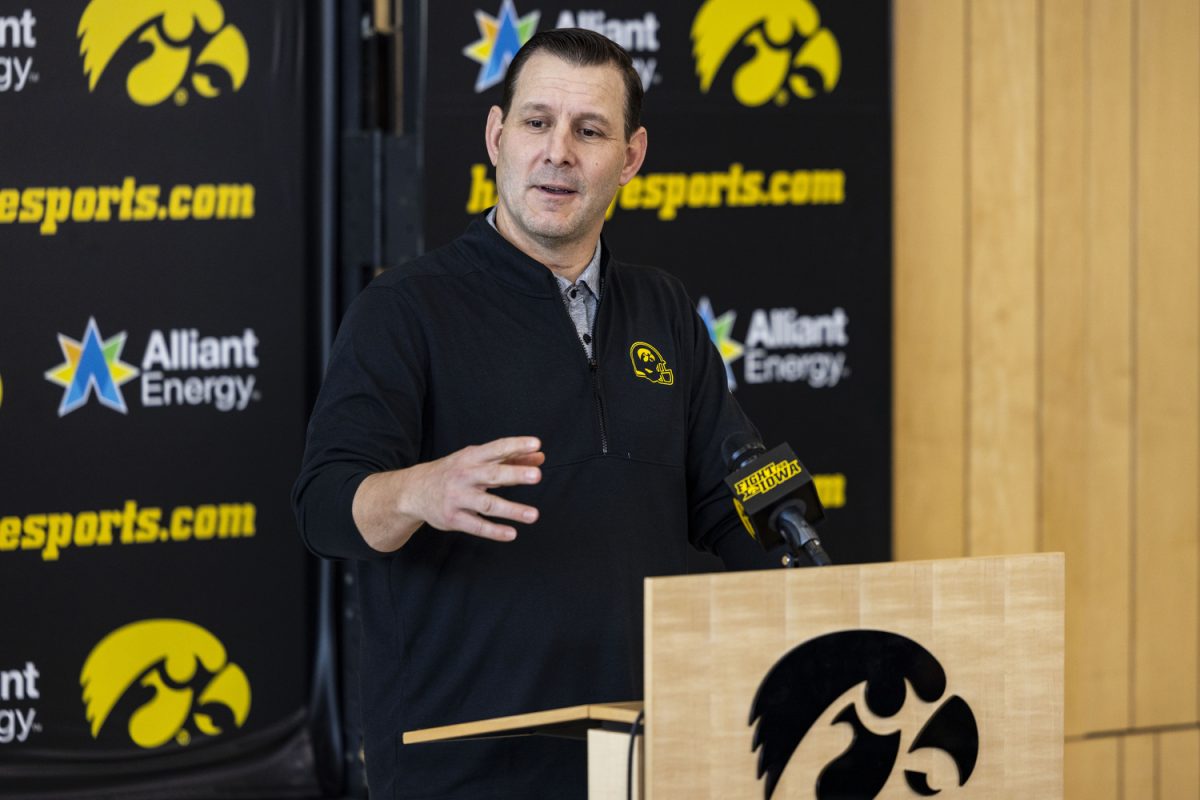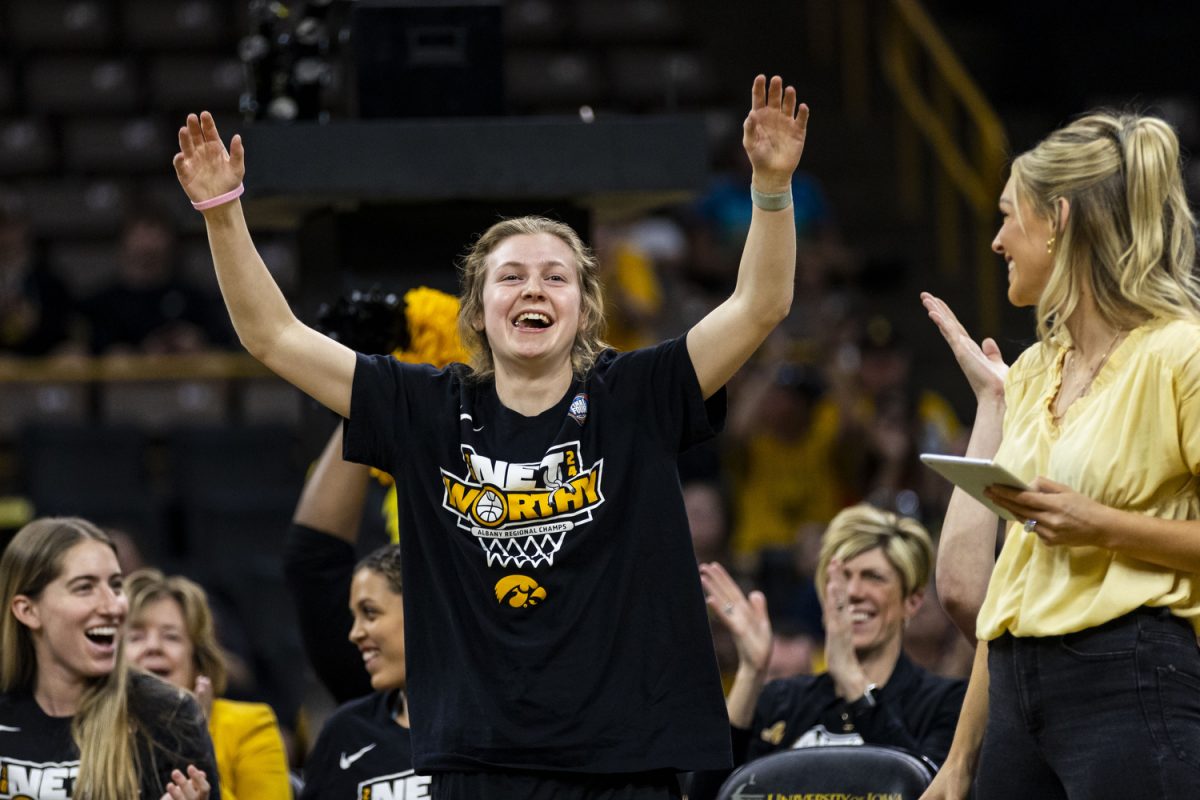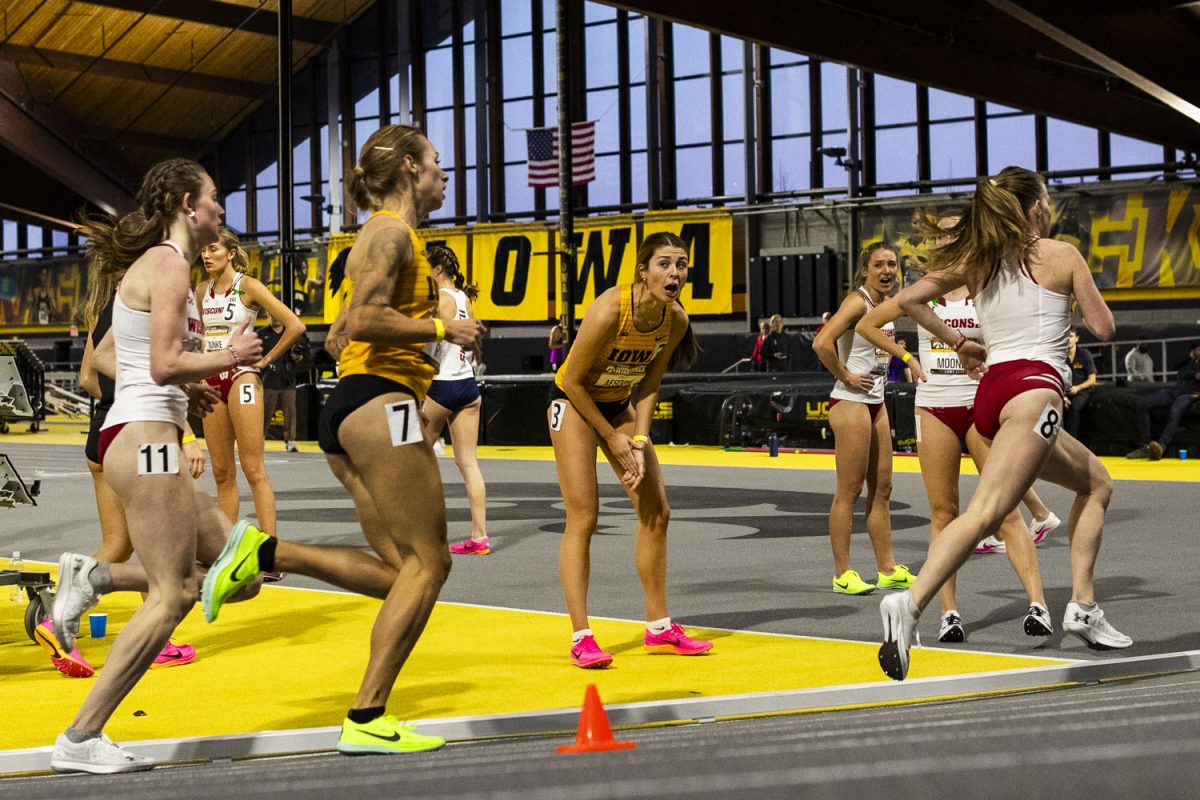Imagine a student-athlete arriving to college needing to fit into a new role.
Now imagine having to switch to the most difficult position in the sport, one that requires years of refined technique and an increased attention to detail.
This story is all too familiar to junior swimmer Sean Hagan.
“I didn’t even come to college as a breaststroker,” he said. “I swam it on a relay in high school, and they thought it looked good. Then [the Iowa coaches] pretty much trained me at it. I became a breaststroker here.”
When he swam for Boone High School, college coaches noticed Hagan’s freestyle and relay racing. But after arriving at Iowa, he was asked to concentrate on the new stroke.
Last season, he led Iowa in the breaststroke at the Big Ten championships, and his best times in the 100 breast (54.93) and 200 breast (159.89), rank fourth on the school’s all-time list.
The breaststroke is the only stroke in which a swimmer uses his legs more than his arms. The perfect stroke requires an immense amount of strength and timing.
“Breaststroke is probably one of the most picky strokes,” Hagan said. “You have to have the technique down to get it right. If you’re off a little bit, you can throw the whole stroke off. It takes a lot of practice and lot of working on technique to nail it.”
Iowa head coach Marc Long said strength and technique is everything in swimming. However, applying that strength to the technique is what separates the great swimmers from the mediocre ones, he said. The sixth-year headman also noted how breaststrokers are different from the rest of the team.
“They tend to be our most studious swimmers as far as the actual sport,” Long said. “They’ll study their event, and for some reason, it attracts that type of mentality, and it does take a lot of technical work.
“We have a saying as coaches: The breaststrokers are a little bit different. I’m not sure if he falls in that category but for some reason it’s a different mentality.”
Hagan, an academic All-Big Ten honoree last season, agreed with Long.
“Swimming is a hard sport, and you have to put a lot of time into it,” he said. “You have to be thinking all of the time and make sure everything is correct while you are swimming your technique. I think that applies to school, too.”
Iowa assistant coach Kirk Hampleman, who works with Hagan on his stroke regularly, said the junior is a tremendous competitor.
Hampleman credits Hagan’s success to the swimmer’s ability. Despite swimming the breaststroke for only a short time, Hagan has seen his 100 time drop by more than six seconds since arriving on campus.
“He’s just a very natural swimmer,” Hampleman said. “He has an understanding about his swimming that a lot of swimmers don’t possess … He opened himself up to that, and we’ve just seen huge drops [in his times].”






